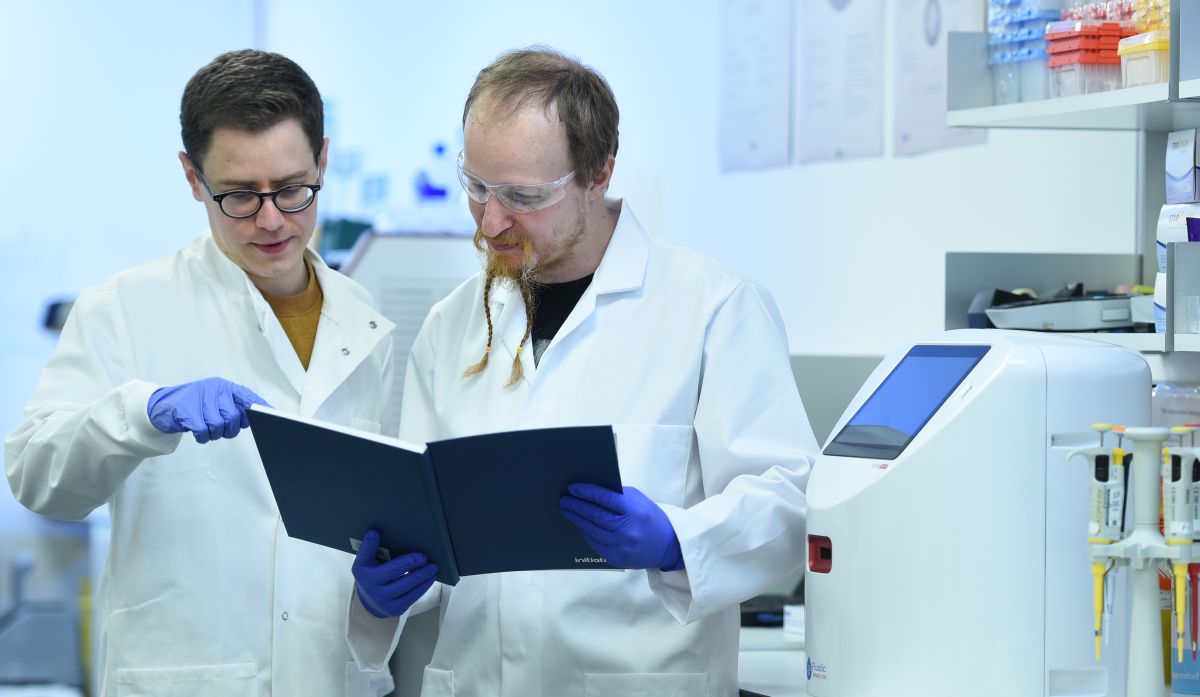Laboratory Instruments / Protein Analysis Systems Fluidic Analytics
Laboratory Instruments
Absolute size measurement of protein complexes by the Fluidity One-W helps to confirm the identity of your complex and means you can control for off-target binding and false positive measurements. Combining minimal sample preparation and automatic KD calculation, you can confidently analyse your protein at the earliest possible stage, reducing the time for important go/no-go decisions.
Study protein–protein, protein–DNA and protein–lipid interactions in biological mixtures such as crude lysates or blood plasma. No
surface binding means no artefacts so you can study proteins in near native state with no risk of non-specific binding. Because there is no surface attachment, it is possible to study challenging proteins including membrane proteins, multi-protein complexes, and intrinsically disordered proteins. Absolute size measurements allows you insight into the conformation and stoichiometry of proteins and their complexes.

study proteins in near native state with no risk of non-specific binding
The Fluidity One-W measures the rate of diffusion of proteins under steady state laminar flow in a microfluidic chip — a technique
known as microfluidic diffusional sizing (MDS).
1. To do this, a stream of fluorescently labelled protein is introduced alongside an auxiliary stream.
2. These streams flow in parallel and because there is no convective mixing the only way protein can migrate into the auxiliary
stream is by diffusion, the rate of which depends on the size of the protein. Small proteins will diffuse rapidly, and large proteins
and aggregates more slowly.
3. At the end, the streams are re-split, and at this point the degree of diffusion is fixed. The quantity of protein in each stream is
then determined by the fluorescence from the label. The ratio of the fluorescence between the two streams gives the protein's
hydrodynamic radius (Rh).
Fluidity One-W can measure proteins in buffer and in crude solutions like cell lysates or biological fluids, because only the
labelled species is detected.
4. If the test is repeated using a mixture of labelled protein and unlabelled binding partner the degree of binding can be observed,
due to the change in average size. Only species including the labelled protein are detected and measured.
Titrating the binding partner against the labelled protein gives a binding curve and automatically generates a KD value. The
hydrodynamic radius for the unbound protein and protein complex are also calculated.
Fluidic Analytics FLUIDITY ONE-W
1
• Disposable single use chips and contained waste minimize risk of cross contamination between measurements and reduce cleaning and setup times
2
Easy-to-use interface and consumable management
3
High reproducibility and accuracy (even at low concentrations)
4
Low sample requirement — Just 5μl per sample
5
In-solution, binding affinity measurement using microfluidic diffusional sizing (MDS)
© COPYRIGHT 2020 TWIN HELIX C.F. /P.IVA and n° Registro Imprese di Milano 05819650960 – REA Milano 1851394 Cap.Soc.Euro 50.000 i.v. - Società uninominale
The following panel allows you to customize your consent preferences for any tracking technology used to help us achieve the features and activities described below. You may review and change your choices at any time.
Strictly necessary More infoInfo
These trackers are used for activities that are strictly necessary to operate or deliver the service you requested from us and, therefore, do not require you to consent.
Measurement More infoInfo
These trackers help us to measure traffic and analyze your behavior with the goal of improving our service.
Targeting & Advertising More infoInfo
These trackers help us to deliver personalized marketing content to you based on your behavior and to operate, serve and track ads.
